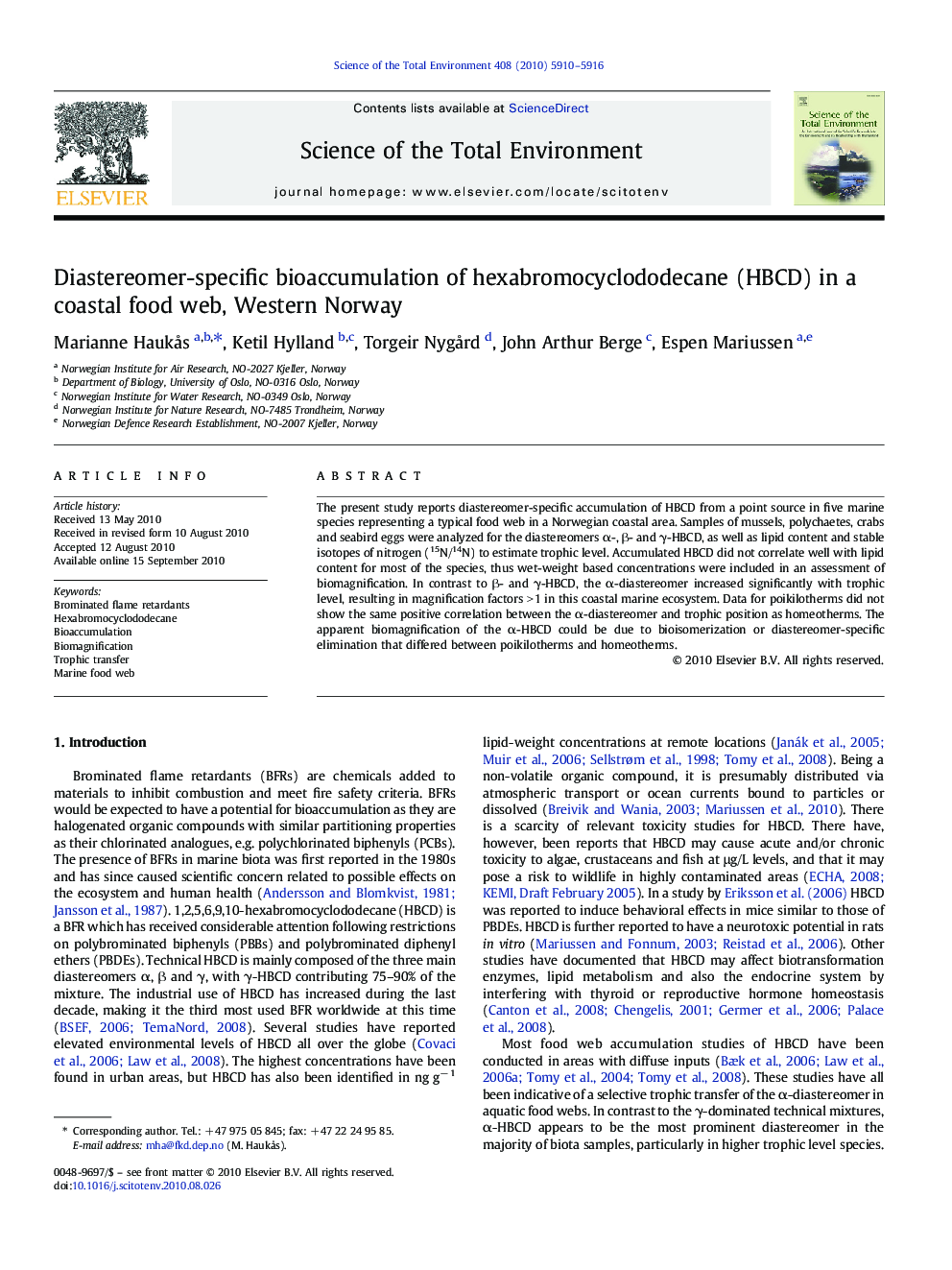| Article ID | Journal | Published Year | Pages | File Type |
|---|---|---|---|---|
| 4431390 | Science of The Total Environment | 2010 | 7 Pages |
The present study reports diastereomer-specific accumulation of HBCD from a point source in five marine species representing a typical food web in a Norwegian coastal area. Samples of mussels, polychaetes, crabs and seabird eggs were analyzed for the diastereomers α-, β- and γ-HBCD, as well as lipid content and stable isotopes of nitrogen (15N/14N) to estimate trophic level. Accumulated HBCD did not correlate well with lipid content for most of the species, thus wet-weight based concentrations were included in an assessment of biomagnification. In contrast to β- and γ-HBCD, the α-diastereomer increased significantly with trophic level, resulting in magnification factors > 1 in this coastal marine ecosystem. Data for poikilotherms did not show the same positive correlation between the α-diastereomer and trophic position as homeotherms. The apparent biomagnification of the α-HBCD could be due to bioisomerization or diastereomer-specific elimination that differed between poikilotherms and homeotherms.
